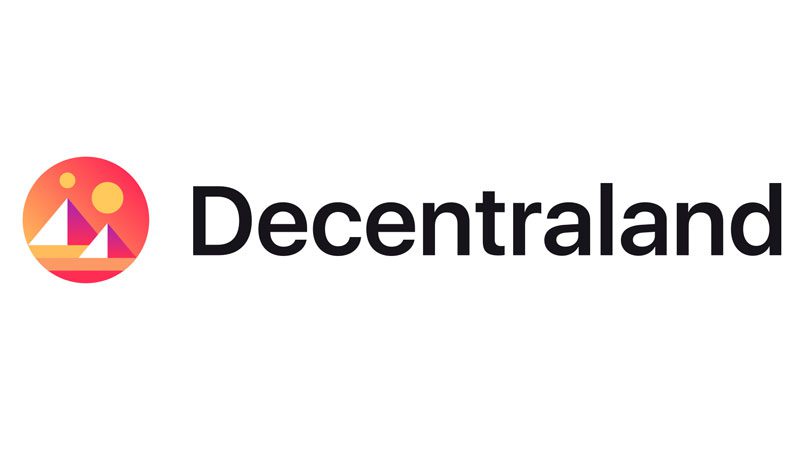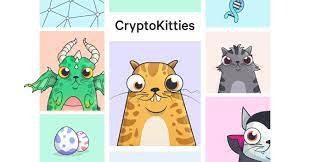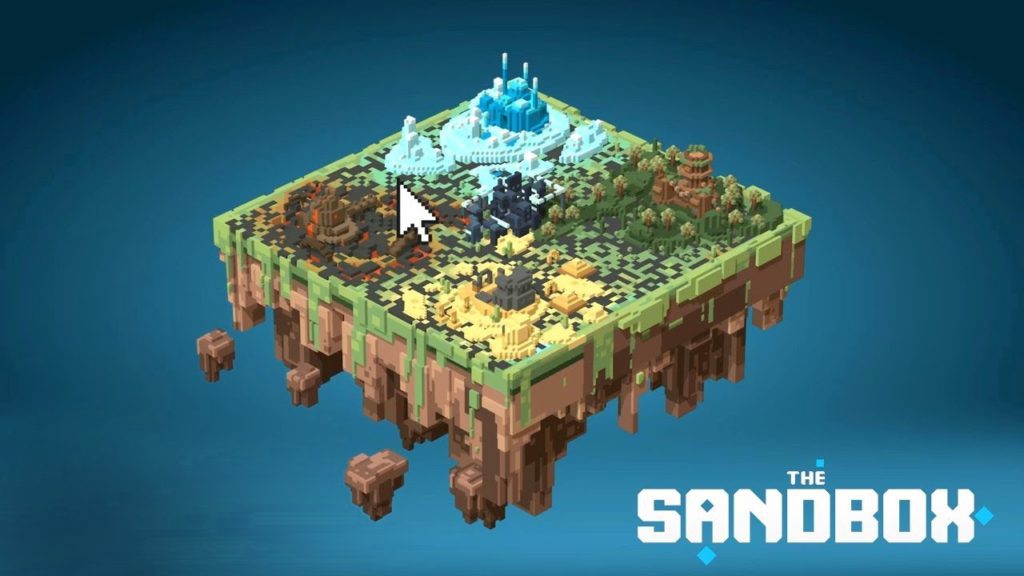Top 10 Web3 Innovators Who Transformed The Web3 Gaming Industry
The gaming industry has witnessed a remarkable transformation in recent years, thanks to the emergence of Web3 technologies. Web3, often referred to as the decentralized web, leverages blockchain, NFTs (Non-Fungible Tokens), and smart contracts to create new opportunities and experiences for gamers. In this article, we’ll explore the top 10 Web3 leaders and innovators who have played a pivotal role in shaping the future of Web3 gaming.
Top 10 Web3 leaders in web3 gaming industry
1. Axie Infinity (@AxieInfinity)

Axie Infinity is a blockchain-based game that allows players to collect, breed, and battle fantasy creatures known as Axies. It has gained massive popularity and has become a prime example of how NFTs can be integrated into gaming, enabling players to truly own their in-game assets.
2. Decentraland (@decentraland)

Decentraland is a virtual world built on the Ethereum blockchain. It empowers users to create, buy, and sell digital assets and experiences. This innovative approach to virtual real estate has opened up exciting possibilities for gamers and creators alike.
3. CryptoKitties (@CryptoKitties)

CryptoKitties is one of the earliest NFT-based games, allowing users to collect, breed, and trade unique virtual cats. It introduced the concept of NFTs to a broader audience and sparked the NFT craze that has since swept through the gaming world.
4. The Sandbox (@TheSandboxGame)
The Sandbox is a user-generated content platform that enables players to create, own, and monetize their gaming experiences. Its voxel-based world-building tools have attracted a community of builders and creators, fostering a thriving virtual ecosystem.
5. Immutable X (@ImmutableX)
Great vid! I absolutely love the #hro platform 💚 Being able to buy #NFTs at a retail store like #gamestop is absolutely next level! @hro #Adoption @Immutablex @GameStopNFT @GameStop #gamestopnft #IMX #BTC #TCG #COLLECTIBLES @DCComics #WONDERWOMAN #BATMAN #SUPERMAN #ETH pic.twitter.com/BMrQnoDZfb
— 🟢HoodSquirrel (@HoodSquirrel) December 9, 2022
Immutable X is a Layer-2 scaling solution for NFTs on Ethereum. It addresses the scalability and gas fee issues associated with NFT transactions, making it easier for gamers and collectors to trade their assets.
6. Yield Guild Games (@YieldGuild)
Yield Guild Games is a decentralized autonomous organization (DAO) that invests in and manages virtual assets in various blockchain-based games. It has pioneered the concept of “play-to-earn,” allowing players to generate income from their gaming activities.
7. Alien Worlds (@alienworlds)
Alien Worlds is a blockchain-based game that blends elements of DeFi (Decentralized Finance) with gaming. Players mine resources on virtual planets and earn NFTs and cryptocurrency rewards, creating a unique gaming economy.
8. Aavegotchi (@aavegotchi)
Aavegotchi combines DeFi and NFTs in a playful way by allowing users to own and interact with unique ghost-like creatures. These Aavegotchis can be equipped with DeFi assets and used in various in-game activities.
9. Myco (@mycoNFT)
Myco is an NFT-based ecosystem that promotes sustainability and environmental awareness through gaming. Players can grow virtual mushrooms and participate in eco-friendly challenges while owning unique NFT assets.
10. The Graph (@graphprotocol)
The Graph is the infrastructure that powers many Web3 applications, including Web3 gaming platforms. It enables developers to efficiently query blockchain data, making it a crucial component of the Web3 gaming ecosystem.
Also, read – Web3 Gaming And Content Creation: NFTs And The Creator Economy
Top 15 things web3 gaming changed in the gaming industry
Web3 gaming has brought about a significant transformation in the gaming industry. It has introduced novel concepts, technologies, and experiences that are reshaping how gamers interact with games and game developers interact with their communities. Here are the top 15 things that Web3 gaming has changed in the gaming industry:
- Ownership of In-Game Assets: Web3 gaming allows players to truly own their in-game assets through blockchain technology. NFTs represent these assets, giving players full control and the ability to trade them freely.
- Play-to-Earn Mechanics: Web3 games have popularized the “play-to-earn” model, where players can earn cryptocurrency and NFTs by participating in the game. This has turned gaming into a potential source of income.
- Interoperability: Web3 gaming has introduced interoperability, enabling assets to move between different games and platforms. Gamers can use their assets in multiple games, increasing their utility and value.
- Decentralized Worlds: Virtual worlds like Decentraland and The Sandbox are entirely owned and operated by their communities, giving players unprecedented influence and creativity within these spaces.
- User-Generated Content: Web3 gaming platforms often encourage user-generated content, allowing players to create and monetize their in-game content, including characters, skins, and levels.
- DeFi Integration: The integration of decentralized finance (DeFi) concepts within Web3 games allows players to earn interest, lend assets, and participate in liquidity pools within the game’s ecosystem.
- Player-Driven Economies: Web3 gaming has established player-driven economies where the value of in-game assets and currencies is determined by the player community rather than a centralized authority.
- Transparency and Security: Blockchain technology ensures transparency in asset ownership, transactions, and scarcity. Players have confidence in the scarcity and authenticity of their digital assets.
- Blockchain-Based Marketplaces: NFT marketplaces like OpenSea have become hubs for trading in-game assets, creating new opportunities for collectors and traders.
- Community Governance: DAOs (Decentralized Autonomous Organizations) are being used to govern Web3 gaming communities. Players have a say in the game’s development, updates, and economic policies.
- Crossover Collaborations: Web3 gaming has facilitated collaborations between different game titles, IP holders, and even industries. Players can see their favorite characters and assets in various games.
- Reduced Fraud: Blockchain technology eliminates many types of fraud in gaming, such as counterfeit in-game items, account hacking, and unauthorized item duplication.
- Global Accessibility: Web3 games are accessible to players worldwide, regardless of their location, allowing for a more diverse and global player base.
- Digital Identity: Players can establish a digital identity that carries across different games and platforms, enhancing their reputation and status within the Web3 gaming ecosystem.
- New Game Design Possibilities: Web3 gaming has sparked the creation of entirely new game genres and mechanics, driven by blockchain technology and player incentives.
These changes brought about by Web3 gaming have not only transformed the gaming experience but have also challenged traditional gaming business models. Game developers are increasingly embracing Web3 technologies to tap into the potential of decentralized, player-centric economies. As Web3 gaming continues to evolve, it’s likely that even more innovations and changes will shape the future of the gaming industry.
These ten leaders and innovators have revolutionized the gaming industry by integrating blockchain technology and NFTs into gameplay, ownership, and in-game economies. They continue to shape the future of Web3 gaming, offering new possibilities and experiences for gamers worldwide. As the Web3 gaming space continues to evolve, we can expect even more innovations and leaders to emerge, further blurring the lines between virtual and real-world experiences.
Stay informed with daily updates from Blockchain Magazine on Google News. Click here to follow us and mark as favorite: [Blockchain Magazine on Google News].
Get Blockchain Insights In Inbox
Stay ahead of the curve with expert analysis and market updates.
latest from tech
Disclaimer: Any post shared by a third-party agency are sponsored and Blockchain Magazine has no views on any such posts. The views and opinions expressed in this post are those of the clients and do not necessarily reflect the official policy or position of Blockchain Magazine. The information provided in this post is for informational purposes only and should not be considered as financial, investment, or professional advice. Blockchain Magazine does not endorse or promote any specific products, services, or companies mentioned in this posts. Readers are encouraged to conduct their own research and consult with a qualified professional before making any financial decisions. The featured image used is just a creative depiction of the title and it does not intend to hurt sentiments of any person or institution. If it hurts anyone sentiments, please do not hesitate to reach out to Blockchain Magazine.

 Bitcoin
Bitcoin  Ethereum
Ethereum  XRP
XRP  Tether
Tether  Solana
Solana  USDC
USDC  Dogecoin
Dogecoin  Cardano
Cardano  Lido Staked Ether
Lido Staked Ether  TRON
TRON  Chainlink
Chainlink  Wrapped Bitcoin
Wrapped Bitcoin  Sui
Sui  Wrapped stETH
Wrapped stETH  Avalanche
Avalanche  Stellar
Stellar  Hedera
Hedera  Toncoin
Toncoin  Shiba Inu
Shiba Inu  LEO Token
LEO Token  Hyperliquid
Hyperliquid  Bitget Token
Bitget Token  Litecoin
Litecoin  WETH
WETH  USDS
USDS  Polkadot
Polkadot  Bitcoin Cash
Bitcoin Cash  Ethena USDe
Ethena USDe  MANTRA
MANTRA  Wrapped eETH
Wrapped eETH  Uniswap
Uniswap  Ondo
Ondo  Pepe
Pepe  Monero
Monero  WhiteBIT Coin
WhiteBIT Coin  Aave
Aave  NEAR Protocol
NEAR Protocol  Mantle
Mantle  Official Trump
Official Trump  Aptos
Aptos  Dai
Dai  Internet Computer
Internet Computer  Ethereum Classic
Ethereum Classic  Bittensor
Bittensor  Cronos
Cronos  OKB
OKB  POL (ex-MATIC)
POL (ex-MATIC)  Gate
Gate 





